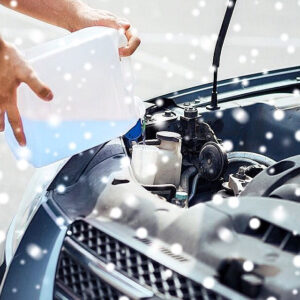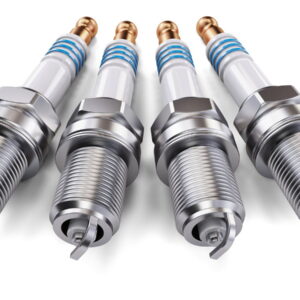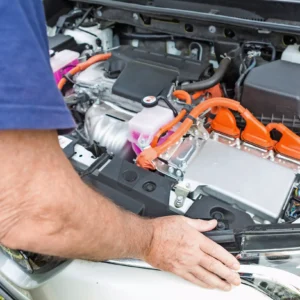Whether you’re gearing up for a road trip or just running errands around town, the last thing you want is to be stranded with a dead battery—especially when a little preventative care could save you hundreds, even thousands, in repair bills. In this post, we’ll walk through five unmistakable warning signs your car battery is on its last legs, compare their implications, and lay out clear, actionable steps you can take before it costs you thousands.
Introduction
Imagine pulling into the office parking lot, turning off your engine, and—when it’s time to head home—your car refuses to start. Frustrating, right? Car batteries aren’t glamorous parts of your ride, but they’re absolutely critical. A failing battery can not only leave you stuck but also lead to damaged electronics or alternator failure if ignored.
Most batteries last three to five years under normal conditions, but factors like extreme climates, short trips, or parasitic drains can shorten that lifespan. By spotting early symptoms—and acting swiftly—you can avoid tow-truck fees, roadside assistance calls, and collateral damage to your vehicle’s electrical system.
Slow Engine Crank: The First Red Flag
You turn the key (or press Start) and…wheeeeee…instead of firing up immediately, the engine turns over sluggishly. That hesitant “slow crank” is your battery begging for help.
- What it is: The starter motor draws power from your battery to spin the engine. If the battery’s capacity dwindles, it struggles to deliver enough amperage, causing that drawn-out spin.
- Why it matters: Repeated slow cranking stresses the starter and alternator. Over time, you may end up replacing multiple components instead of just the battery.
- Research says: According to Jiffy Lube, a slow engine crank is often the earliest warning sign of a failing battery—especially if you hear the starter engaging longer than usual.
Quick check: If it takes more than a second for your engine to fire up, schedule a battery test at your local auto shop. Better safe than stranded.
Dim Headlights and Electrical Glitches
Ever notice your headlights or interior lights dimming when you idle at a stop? Or sudden flickers in your dashboard gauge cluster? These are subtle—and easy to overlook—clues of a weakening battery.
- What it is: Modern vehicles rely on the battery for all low-voltage electronics. A drop in battery voltage shows up first as dim lights or erratic behavior in power-hungry features (heated seats, infotainment screens, power windows).
- Why it matters: Dimming lights not only reduce visibility (and safety) but also signal the battery can’t maintain a steady voltage under load.
- Research says: Interstate Batteries notes that “weak batteries don’t do cold”—and one telltale symptom is lighting that fades or flickers, especially when you turn on accessories.
Quick check: With the engine running, turn on headlights, radio, and AC. If the lights visibly dim or electronics reset, it’s time for a professional battery and charging-system inspection.
Dashboard Warning Lights You Can’t Ignore
Your dash might host several cryptic icons—but when the battery-shaped warning light or the generic “Check Engine” icon glows, don’t brush it off.
- What it is:
- Battery light: Indicates your charging system (battery + alternator) isn’t delivering expected voltage.
- Check Engine: Often thrown when the voltage dips below a threshold, as the onboard computer detects low supply.
- Why it matters: A lit warning lamp is the vehicle’s way of saying, “Stop ignoring me!”
- Research says: McCarthy Collision Centers lists “Check Engine” illumination as the number-one sign your battery may be failing—and technicians often test the battery first when this light comes on source.
Pro Tip: Don’t assume it’s “just” the alternator. Even a brand-new alternator can’t charge a battery that’s reached its end of life.
Temperature Sensitivity: Cold Weather Effects
If your car starts fine all day but hesitates on a cold morning, pay attention—your battery’s chemistry is temperature-sensitive.
- What it is: At lower temperatures, chemical reactions inside the battery slow, reducing the available current (cold-cranking amps or CCA).
- Why it matters: Underperformance in cold weather suggests your battery is losing the reserve capacity needed for reliable starts.
- Research says: As Interstate Batteries explains, a healthy battery can cr crank your engine in sub-zero conditions; if yours struggles when the mercury dips, it’s a textbook case of “temperature sensitivity” source.
Quick check: If your engine takes noticeably longer to start below 40 °F (4 °C), even after a short drive, have a technician test both battery capacity and CCA rating.
Corroded Terminals and Physical Damage
Sometimes the most visible signs are on the battery itself. Corrosion, leakage, or a bloated case are serious red flags.
| Warning Sign | What You See | Possible Cause | Immediate Action |
|---|---|---|---|
| Corroded Terminals | White/greenish powder around posts | Acid leakage, loose fit | Clean with baking soda solution, tighten clamps; test battery |
| Swollen or Cracked Case | Bulging sides or visible cracks | Overcharging, heat build-up | Replace battery immediately |
| Rotten Egg Smell | Sulfur (H₂S) odor near battery | Internal short or leakage | Do not start car; ventilate area and replace battery |
| Acid Leaks | Wet spots or crusty residue on tray | Cracked casing, overfill | Neutralize acid, replace battery |
Insight: Physical damage or corrosion not only impairs electrical connectivity but also indicates internal cell failure—meaning replacement is literally the only safe option.
Key Comparisons and Deeper Insights
| Symptom | Likely Cause | Ease of DIY Check | Risk if Ignored |
|---|---|---|---|
| Slow Crank | Low amp output | Medium | Alternator/Starter damage |
| Dim Lights | Voltage instability | Easy | Reduced visibility, ECU errors |
| Dashboard Lights | Charging circuit issues | Easy | Sudden no-start, warranty void |
| Cold-start Hesitation | Temperature sensitivity | Medium | Stranding in cold weather |
| Physical Corrosion/Damage | Chemical leakage | Easy | Safety hazard, acid burns |
- Cost implications: A mid-range battery (3–5 years old) replacement costs $100–$200. Ignoring signs can lead to alternator replacements ($400–$600) or ECU repairs ($1,000+).
- Comparison insight: Electrical symptoms often precede physical ones—catching dim lights or warning lamps early is your best bet for a low-cost fix.
What to Do Before It Costs You Thousands
- Routine Testing
- Have your battery load-tested every 12–18 months. Most shops offer free checks.
- Terminal Maintenance
- Inspect and clean terminals every six months with a baking-soda paste and a wire brush.
- Drive Smart
- Avoid frequent short trips—give the alternator time to recharge the battery fully.
- Use a Trickle Charger
- If you park for weeks at a time, use a maintenance charger to prevent self-discharge.
- Monitor Age
- Mark your battery’s install date on the case; plan replacement at the three-year mark.
- Professional Inspection
- At the first sign of trouble—slow crank, dim lights, or dashboard warnings—schedule a diagnostic to isolate whether it’s battery, alternator, or parasitic draw.
Conclusion & Call to Action
Your car battery may be out of sight, but it shouldn’t be out of mind. By tuning into these five warning signs—slow crank, dim lights, dashboard warnings, temperature sensitivity, and physical damage—you can head off bigger bills and more serious breakdowns. Don’t wait for that fateful morning when your car refuses to start; act now:
Ready to take control of your battery health?
• Stop by your local auto-care center for a free battery check.
• Order a trickle charger to keep your battery topped up.
• Bookmark this guide and share it with friends—because nobody likes being stuck on the roadside!
Stay charged up, and drive on with confidence—your wallet (and your schedule) will thank you.






